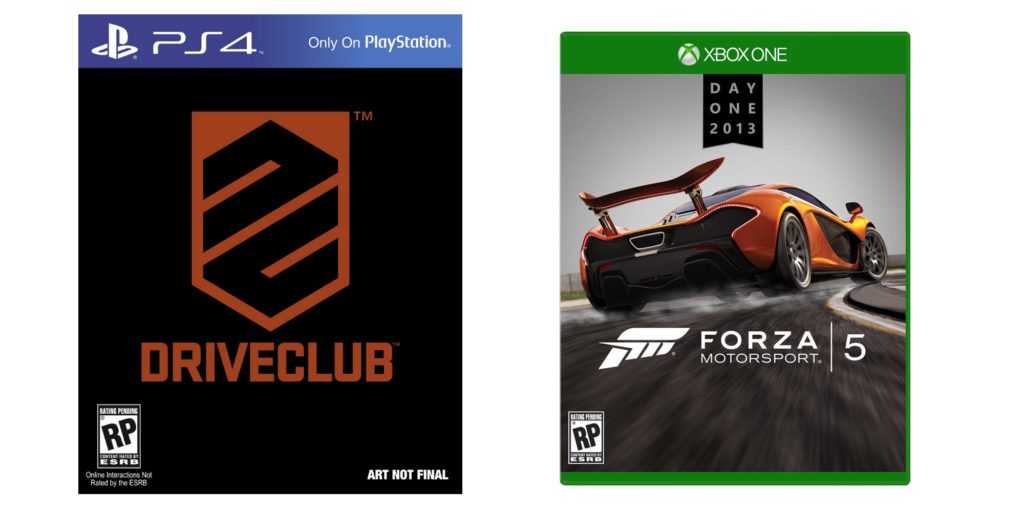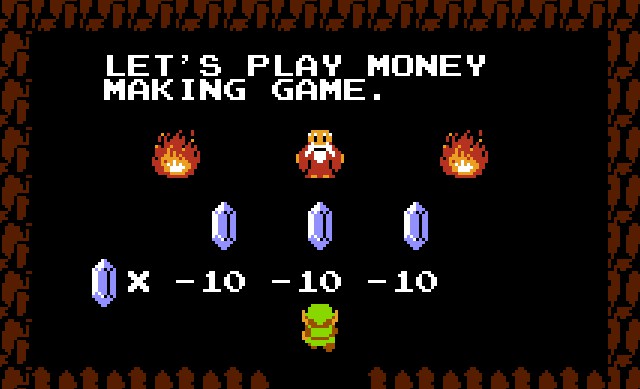With both Microsoft and Sony’s next generation consoles getting a proper reveal this week at E3, it’s time we take a look at what’s been shown, what’s been promised, parse out the rumors, and see how the two line up. In full disclosure, I switched from Nintendo to Sony when the first PlayStation was released and have since owned two PS2s, two PSPs, two PS3s, and one Vita. I have never owned a Microsoft console. I still own an NES, SNES, and RetroDuo, but I rarely played my N64 so I sold it; I haven’t owned a Nintendo console since that N64. So it’s clear I’m a Sony fanboy, but I like to think I’m rational enough to be reasonably neutral. Just because I don’t play a 360 doesn’t mean I’m a whining internet fan that automatically hates it. So here goes:
Optical Drive – Both new consoles will feature a blu-ray drive for physical media. Sony gets legacy points for having already done this, but we can’t count that for the next generation. Score? Tie
CPU – x86-64 AMD ‘Jaguar’ 8 cores vs. 8 Core Microsoft custom CPU Unless you’re a hardcore techno-geek, these are basically the same thing. Score? Tie
RAM – GDDR5 8GB vs. 8GB DDR3 I’m not well-versed in the subtleties of the difference between the two. From what I can make out, the PS4’s GDDR5 is more efficient, despite having the same processing power. In some miracle of technology I also don’t understand, Microsoft says theirs doesn’t need to be that efficient because some of the processing will be done remotely on their servers. I feel like one should have an edge here, but it’s so slight I’m going with Score? Tie
HDD – Both have a built-in 500GB hard drive. Sony has confirmed their hard drive is DIY upgradeable. I have no confirmation from Microsoft on their ability to upgrade but we won’t penalize them for it yet. Score? Tie
GPU – I won’t delve deeply into this because exact technical specifications aren’t available and I wouldn’t understand them if they were. According to reports, Microsoft’s GPU is capable of 768 compute units, while Sony’s will perform 1,152 units. I’ll give Sony the point here, but I doubt the average person will be able to see much difference in-game. It’s also important to note that the extra computing only matters if developers use it. Score? Sony
Hardware Score? +1 Sony
The Peripherals:

Controller – Both controllers have been slightly revamped but should be familiar enough to legacy players. Sony has added a touch pad device, similar to the one on the back of the Vita. It also has a light on the back to apparently help you identify your controller and possibly work with their new Eye. We’ll have to see how those work out. The DualShock 4, like the DualShock 3, has a built-in battery that can be charged from your system (including when your PS4 is in the new standby mode) with a USB cable. The One’s controller, like the 360’s, has a removable battery pack that can also be charged via USB. Score? Tie
Motion Controls – Microsoft’s Kinect 2 will come bundled with all consoles. Sony’s new Eye will cost $60 and may still require other Move controllers, though rumors have it that PS4 will use your existing PS3 Move wands. The Kinect will also be vital to controlling the system’s non-gaming functions (like telling it to turn on or off, load Netflix, etc.). I have my own trepidation about a camera and microphone that must be constantly monitoring for the phrase “XBox On.” The hi-def on Kinect 2 is also a little terrifying. My own paranoia aside, Microsoft gets the nod here for awesome tech and bundling the device. Score? Microsoft
Second Screen – As a new concept, this is tough to judge. By making it a standardized part of their console, I’d say Nintendo scores this round, except I’m not including them in this side by side. Certainly Microsoft should get the edge here because SmartGlass will be available on most phones and tablets – items you likely already have. Sony has promised a similar functionality for phones and tablets, but it may be limited to certain brands and probably won’t be available at launch. PS4 does have second screen functionality with the Vita, but that’s a whole new device at $200+ if you don’t already own one. Then again, you’ll actually be able to play your PS4 games directly on your Vita, not just adding a map screen or item management. Yes it’s a tie, but I’m giving a point to both. Microsoft gets a +1 for accessibility; Sony gets a +1 for awesomeness. If phone and tablet promises from Sony live up, they’ll definitely take this round. Score? Sony and Microsoft
Peripheral Score? +1 Microsoft
The Games:

Exclusives – Most of the major AAA titles (Call of Duty, Battlefield, Assassins’ Creed, Destiny, The Elder Scrolls, Final Fantasy) are coming to both systems. This category really comes down to your favorite franchises and exclusives. Sony is hyping they have exclusive content. But what is it? An extra hour of Assassins’ Creed IV, a Batman ’66 costume for Arkham Origins, and the like. It’s cool stuff, but nothing to decide your console for you. Sony has announced exclusive titles like inFamous Second Son, DriveClub, The Order, and more. Microsoft has Halo. While that only caters to one kind of fan, Halo is a juggernaut that can’t be denied. They’ve also stated they will have 15 exclusives in the first year, eight of which are new IPs. Score? Tie
Indie Games – It’s a safe bet both consoles will have their share of independently developed games. The XBox 360’s early years premiered games like Braid and Limbo, but they’ve since made indie titles difficult to find on XBLA and don’t seem to promote them well. Sony’s recent history with independent developers is much stronger, and they’re clearly influencing many decisions for the next generation. Indie titles were a big part of the E3 presentation and they’re also forming a strong focus in the early months of PS+ for PS4. I’m forecasting a bit, but I have to give Sony the edge. Score? Sony
Backwards Compatibility – Neither console will have built in capability for running older titles. Which always seems to be a sore spot at release time, but quickly becomes a feature that’s rarely used. On Microsoft’s behalf, they’re releasing a slimmed down and cheaper 360 so you can fire up your older titles at a reasonable price. Sony has plans to introduce Gaikai in “early 2014” for PS3, PS4, and Vita. With Gaikai you’ll be able to stream and play any title from the entire PlayStation legacy library – all titles from three consoles and two handhelds! Details are still to come on Gaikai (price, functionality, etc.) but it definitely takes the point if it lives up to expectation. Score? Sony
Games Score? +2 Sony
Cost:

Console Price – Sony’s console is $399, while Microsoft’s is $499. In fairness, the XBoxOne comes with the Kinect 2. Adding the camera to your PS4 is an extra $60. Still, that’s $460 versus $500. Cheaper, and you don’t have to buy equipment you may not want. Score? Sony
Online Use – This is a much easier comparison now that Microsoft is losing their point system and charging actual money. Both consoles will require you to subscribe to their premium service if you want to play online. Sony’s PS+ is $50 for an annual membership and gets you their instant game collection with a promise of at least one new game per month. Plus members traditionally get better prices on paid content as well and its benefits will run across PS3, PS4, and Vita. Microsoft hasn’t detailed any changes, so let’s assume it will stay its present course. A one year membership runs $60. As announced at E3, Gold members will now be getting two free games a month. A similar (though not equal) price, similar content, and each company ripping off an idea from the other? Score? Tie
Cost Score? +1 Sony
Miscellaneous:
Sharing – Both consoles will have a sharing functionality. Microsoft will work with Twitch, which is a far more popular service than the Ustream Sony is using. Both consoles will make it easy to share your achievements with Facebook, Twitter, and whatever new thing we come decide to use to deliberately erase our own privacy. The features seem fairly equivalent to me, but I’ll give it to Microsoft for Twitch. I’m mostly just being a good sport, because they’re about to get a drubbing. Score? Microsoft
Used Games – Microsoft has taken steps to limit the used game market for XBoxOne. You can give a game to a friend, but they have to be on your friends list for at least 30 days and it only be given once. You can sell used games to “authorized retailers” but there’s little to no clarification on how this will work. Microsoft will not charge any fees for a used game to be converted to a new user, but they will leave the publisher with an open option to do exactly that. Rentals have not been clarified at all. Meanwhile, Sony has made it clear that loaning a game to a friend is as easy as handing them the disc. They have announced no plans for changing the used game market, either through retailers like GameStop or independent sales via eBay or Craigslist. Rentals will also be just as easy, giving GameFly members a huge sigh of relief. Score? Sony
DRM – The early rumors of “always online” aren’t true, but if you want to play on an XBoxOne you’ll still need reliable access to internet. Your console will need to “check in” with the mothership at least once every 24 hours to insure all of your games are legal and eligible to be played by you or on your console. Even offline single player games will not function without this periodic check in. Sony has no such requirement. For many gamers this is not an actual obstacle, but they aren’t happy with it anyway. Recent PC games with restrictive DRM have made playing legal copies, in a legal manner, difficult or even impossible at times. Those without reliable internet shouldn’t even consider the Microsoft console. Score? Sony
Miscellaneous Score? +2 Sony
There you have it. Sony 6, Microsoft 1. Is this a completely non-biased comparison? No. But it’s hard to fault a hardware advantage, price advantage, and a more open platform for gamers and independent developers. Are DRM and used games neutral categories? No, they’re definitely skewed. But they are incredibly salient and important topics. Has Sony said or done anything with PS4 to create a comparable level of concern? No. If you’re in love with your controller and longtime franchises, you don’t want to lose your achievement cred, you like Kinect, you have good internet, and you always buy your games new then maybe that extra $100 is worth it. That sure seems like a lot of “if”s when you’re looking to drop that amount of money.
I’m sure some of you disagree with these evaluations. Go ahead, blast me in the comments. Better yet, provide me with some alternate analysis. Why is Microsoft’s hardware better? Why is the DRM thing cool? To be perfectly honest, I’d like to view Xbox One in a better light than it’s shown itself so far. I believe the competition in the current generation has been a benefit for gamers. The last thing I want to see is a one-sided console generation.
